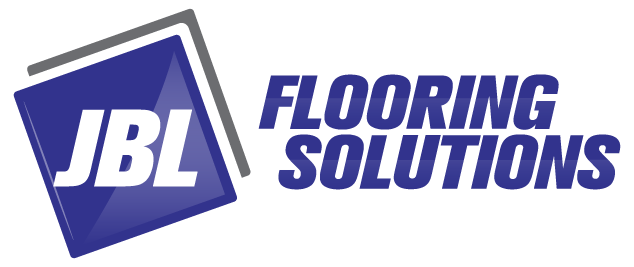Everything You Need to Know about The Best Removing Tile from Concrete Floor Company
Removing tile from a concrete floor can be a challenging and labor-intensive task, but it’s a crucial step in many renovation and remodeling projects. Whether you’re upgrading your flooring, repairing damage, or preparing for a new installation, understanding the best methods and techniques for tile removal is essential. If you are searching for the best removing tile from concrete floor company, in this comprehensive guide will cover everything you need to know about the process, including tools, techniques, and tips for a successful project. For professional assistance, consider JBL Flooring Solutions, experts in tile removal and flooring solutions.
Why Remove Tile from Concrete Floors?
Old tiles often need to be removed before installing new flooring. Whether you’re transitioning to hardwood, laminate, or new tiles, a clean and smooth concrete surface is crucial for the proper adhesion and appearance of the new floor.
If your existing tiles are damaged or outdated, removing them allows you to repair any issues with the concrete subfloor. This ensures that the new flooring will be installed on a solid and level surface, preventing future problems.
Updating the look of your space often requires removing old tiles. New flooring options can enhance the aesthetic appeal of your home or business, making it more attractive and functional.
The Tile Removal Process
Before starting the removal process, assess the area to determine the best approach: Identify the type of tiles and adhesive used. This will influence the tools and methods required. Check the condition of the concrete subfloor to plan for any necessary repairs. Consider the size of the area to estimate the time and effort required.
Gathering the Right Tools and Materials
Proper tools and materials are essential for an effective tile removal process:
- Hammer and Chisel: Useful for prying up tiles.
- Tile Removal Machine: Heavy-duty tools designed for large-scale projects.
- Pry Bar: Helps in lifting tiles from the concrete.
- Scraper: Removes residual adhesive and mortar.
- Protective Gear: Safety glasses, gloves, and dust masks to protect yourself from debris and dust.
- Vacuum or Broom: For cleaning up dust and debris.
Preparing the Work Area
Preparation is key to a successful tile removal project. Remove all furniture and items from the space to provide a clear working area. Use drop cloths or plastic sheeting to cover adjacent surfaces and prevent damage from debris.
Removing the Tiles
The actual removal of tiles involves several steps. Use a hammer and chisel or a tile removal machine to break the bond between the tiles and the concrete. Start at the edges or corners of the tiles. Once the tiles are loosened, use a pry bar to lift them off the concrete. Be careful not to damage the underlying surface. After the tiles are removed, scrape off any remaining adhesive or mortar using a scraper. This step is crucial for preparing the concrete surface for new flooring.
Cleaning and Preparing the Concrete Subfloor
Once the tiles and adhesive are removed. Use a vacuum or broom to remove dust and debris from the concrete surface. Check the concrete for any cracks, holes, or uneven areas. Repair these issues to ensure a smooth surface for new flooring. If necessary, use a self-leveling compound to correct any unevenness in the concrete.
Tackling the tile removal in smaller sections can make the process more manageable and allow for better control. This approach also helps in containing dust and debris.
Invest in high-quality tools for efficiency and effectiveness. A tile removal machine can significantly speed up the process for larger areas, while manual tools are suitable for smaller jobs.
Tile removal can be hazardous due to sharp edges and dust. Always wear protective gear, including safety glasses, gloves, and a dust mask. Ensure proper ventilation in the work area to minimize dust inhalation.
For large-scale projects or if you encounter difficulties, hiring a professional tile removal service can save time and ensure a high-quality result. JBL Flooring Solutions offers expert tile removal services with the necessary tools and experience to handle any job.
Common Challenges and Solutions
Old or dried adhesive can be difficult to remove. Use products specifically designed to break down adhesive. Applying heat with a heat gun can soften adhesive, making it easier to remove.
Removing tiles can sometimes reveal damage to the concrete subfloor. Use concrete patching compounds to fill in cracks and holes. For uneven surfaces, grinding can help achieve a smooth finish.
Dust and Debris
Tile removal generates a lot of dust and debris. Use vacuums or dust collection systems to minimize dust in the air. Regularly clean the work area to manage debris and maintain a safe environment.
Benefits of Hiring JBL Flooring Solutions
JBL Flooring Solutions brings extensive experience and expertise to tile removal projects. Their professional team handles the entire process with precision and efficiency.
The company uses state-of-the-art equipment to ensure effective tile removal and minimal disruption to your space.
JBL Flooring Solutions offers comprehensive services, including tile removal, subfloor preparation, and disposal, ensuring a seamless transition to new flooring.
Their commitment to customer satisfaction means you can expect high-quality results and exceptional service throughout the project.
JBL Flooring Solutions emphasizes environmentally responsible practices, including proper disposal and recycling of materials.
Conclusion
If you are searching for the best removing tile from concrete floor company, consider reaching out to JBL Flooring Solutions. They offer expert assistance and high-quality results. By understanding the process, using the right tools, and following best practices, you can ensure a successful tile removal. JBL Flooring Solutions’ experience, advanced equipment, and commitment to customer satisfaction make them an excellent choice for all your tile removal needs. With the right approach and support, you can achieve a smooth and efficient transition to your new flooring.

